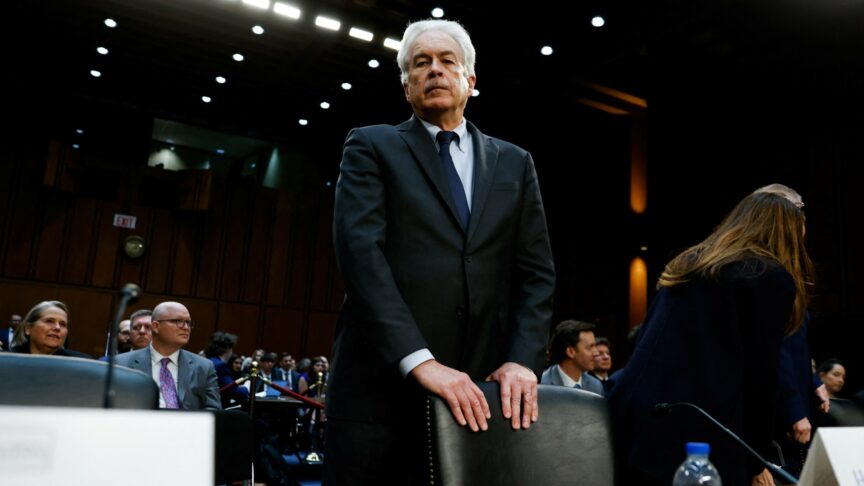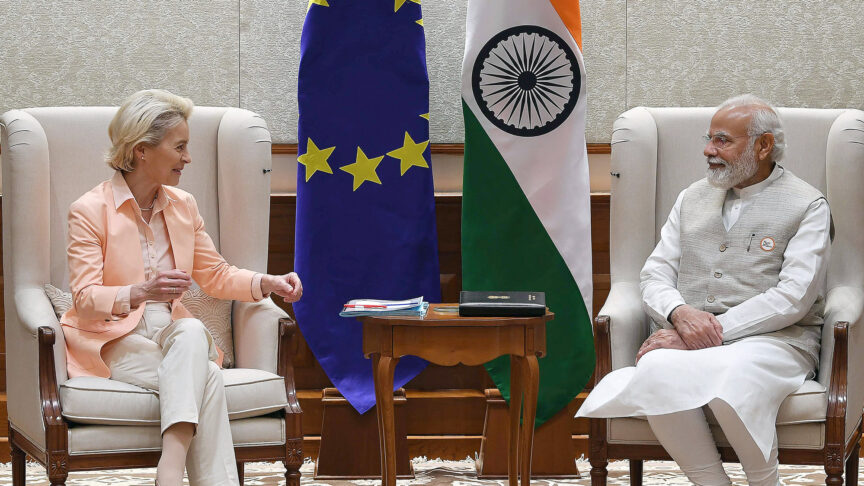Afghanistan: Let me count the wars…
Waging even one war and winning it is complicated enough. Not to mention waging three different wars and winning them. This is what faces the international forces in Afghanistan. (In English and Spanish)
Waging even one war and winning it is complicated enough. Not to mention waging three different wars and winning them. This is what faces the international forces in Afghanistan.
First, a war typical of the 21st century: small special forces teams with night vision and laser sights pursue Al Qaeda terrorists, with the help of pilotless drones, satellite-guided by operators on other continents. Three less cinema-presentable aspects of this war are beginning to come to light thanks to document leaks and investigations such as the most recent work of Bob Woodward: thousands of civilian casualties due to bombing mistakes; hundreds of millions of dollars handed out by the CIA with the aim of buying loyalties (including the recruitment and handling of a secret army of some three thousand Afghans); total permissiveness with a corrupt elite indifferent to the fate of the general population.
The second is a war typical of the 20th century, which is not faring much better. When, after Bush and Rumsfeld’s failure, NATO and the international community came forward, the objective changed: it was now a war to construct a functioning democratic state. Something akin to what was done, with notable success, in Germany and Japan after World War II. And like what the Soviets attempted in 1979, with a different (but equally ambitious) model in mind. This meant kicking out the Taliban; then installing highways; elections; independent judges; schooling for women — in short, all the stuff of liberal democracies. Few considered that doing all this would require a military presence and an expenditure far in excess of what the West was willing to put up. The international coalition never deployed enough troops or invested the sums remotely necessary to control the territory and set up a functioning state.
This is where the third war comes in, which looks a lot like another rebellion by the Pashtuns (the dominant ethnic group), not unlike the one the British faced in the 19th century. An essentially anti-colonial movement, in which the country’s traditional power structures rebel against foreign occupation and the Kabul government, which is perceived as ineffective, illegitimate and a puppet of foreigners. This rebellion, originating in the South of the country, has spread East and North, partly explaining the rising violence in traditionally quiet zones, such as that currently occupied by the Spanish.
These are the main three wars, but Afghanistan is like a Russian matrioshka, and there is always another war inside if you look hard enough. So one could think of a fourth latent war, the civil war between the pashtun and the other ethnic groups in the country; and a fifth war, the one quietly fought by India and Pakistan on Afghan soil; and even a sixth war; the very opaque war conducted in the FTA areas of north-west Pakistan by US special forces and the Pakistani army.
It is in this confluence of wars, going far back in time, where we begin to lose sight of the possibility of obtaining any clear victory. Al Qaeda may be contained or weakened, even displaced as a result of particularly acute pressure. Nor are the Taliban invincible, if they are seen as a foreign force that does not respect local traditions and power structures, and if these local powers enjoy autonomy and resources to win the support of the population. But if most of the Pashtun population stops trusting the Kabul government and the international forces, and, either out of fear of the Taliban or due to corruption, incompetence and civilian victims, holds aloof or seconds the Taliban, then there is little to be done. The recent legislative elections are worrying in this respect: a high abstention rate means that a great sector of the population is sitting back to see who wins (the Taliban or the international coalition), before taking sides.
At this stage there is little point to military operations, except as a way to weaken the Taliban, with an eye to future negotiations addressed to the Pashtun leaders. Afghanistan is not going to be an exemplary democracy in the near future, but nor do we wish to see it turned into another Somalia. In the meantime, there are many lesser (and greater) evils with which we shall have to live. Inevitably this is going to require an international presence on the ground for some time to come.
—
La primera, una guerra típica del siglo XXI: pequeños equipos de fuerzas especiales con visión nocturna y señaladores láser persiguen terroristas de Al Qaeda valiéndose del apoyo de aviones no tripulados teledirigidos vía satélite por operadores situados a miles de kilómetros de distancia. La parte menos cinematográfica de esta guerra la comenzamos a conocer ahora vía algunas filtraciones documentales como las de Wikileaks e investigaciones periodísticas como la más reciente de Bob Woodward (cuyo avance hemos leído esta semana): varios miles de víctimas civiles por culpa de errores en los bombardeos o por el gatillo fácil de algunos de estos cazarrecompensas; cientos de millones de dólares en efectivo distribuidos sin ningún control por la CIA con el objeto de comprar lealtades (incluyendo el reclutamiento y manejo de un ejército secreto de unos tres mil afganos), y una permisividad total con una élite corrupta y completamente desentendida de la suerte de la población afgana. Así comenzó la guerra en 2001, y a juzgar por las propuestas de retirada que proliferan en muchos ámbitos, ahí podría volver.
La segunda, una guerra típica del siglo XX que no va mucho mejor. Cuando, tras el fracaso de Bush y Rumsfeld, llegaron la OTAN y la comunidad internacional, el objetivo se transformó: de lo que se trataba ahora era de construir un Estado democrático que funcionara. Algo así como lo que se hizo en Alemania y Japón con notable éxito después de la II Guerra Mundial. Y algo así como lo que intentaron los soviéticos en 1979 con otro modelo en mente, pero con objetivos igualmente ambiciosos. Ello implicaba echar a los talibanes y luego construir carreteras, celebrar elecciones, nombrar jueces independientes y escolarizar a las niñas, es decir, las cosas que suelen hacer las democracias. Pocos contaron con que sacar un país de la pobreza y retraso económico extremo iba a requerir una presencia militar y un desembolso económico muy por encima de lo que Occidente estaba dispuesto a comprometer, tanto en volumen como en el tiempo. Lo cierto es que la coalición internacional nunca llegó a desplegar las tropas necesarias ni a invertir las sumas necesarias para hacerse con el control del territorio y poner en marcha un Estado que funcionara. El resultado, un círculo vicioso de inseguridad e incapacidad gubernamental.
Ahí es donde aparece la tercera guerra, que más bien parece una rebelión pastún (la etnia dominante) como la que tuvieron que hacer frente los británicos en el siglo XIX. Se trataría de un movimiento de corte básicamente anticolonial en el que las estructuras tradicionales de poder del país se rebelan contra la ocupación extranjera y el Gobierno de Kabul, al que perciben como ineficaz, ilegítimo y títere de los extranjeros. Esa rebelión se origina en el sur del país y luego se extiende hacia el este y el oeste, lo que explica el aumento de la conflictividad en zonas tradicionalmente tranquilas, como la que ocupan los españoles.
Es en esa confluencia de guerras que retroceden en el tiempo donde la guerra de Afganistán llega a su fin desde el punto de vista de las posibilidades de obtener una victoria. Al Qaeda puede ser contenida o debilitada, incluso desplazada de lugar como resultado de una presión exitosa. Los talibanes tampoco son invencibles si son vistos como una fuerza extranjera que no respeta las tradiciones ni las estructuras de poder locales, especialmente si esos poderes locales gozan de autonomía y recursos para ganarse el apoyo de la población. Pero si la mayoría de la población pastún deja de confiar en el Gobierno de Kabul y en las fuerzas internacionales, y bien por miedo a los talibanes o como consecuencia de la corrupción, las víctimas civiles o la incompetencia de Kabul, decide mantenerse al margen o secundar a los talibanes, entonces hay poco que hacer. Las recientes elecciones legislativas son preocupantes precisamente por esa razón: la alta abstención significa que un gran sector de la población prefiere quedarse al margen y esperar a ver quién gana (talibanes o coalición internacional) antes de escoger bando.
Llegados a ese punto, las operaciones militares no tienen mucho sentido excepto como elemento debilitador de los talibanes cara a una futura negociación cuyo objetivo sea el acuerdo con los líderes pastunes. Afganistán no va a ser una democracia ejemplar en un futuro inmediato, pero tampoco queremos que se convierta en una nueva Somalia. Entre medias, sin gloria ni victoria, hay un gran número de males menores (y males mayores) con los que tendremos que convivir y entre los que tendremos que elegir. Inevitablemente, ello requerirá la presencia de la comunidad internacional, todavía por algún tiempo.”
This article first appeared in spanish in El Pais, and in English in the International Herald Tribune (subscribers only)
The European Council on Foreign Relations does not take collective positions. ECFR publications only represent the views of their individual authors.


